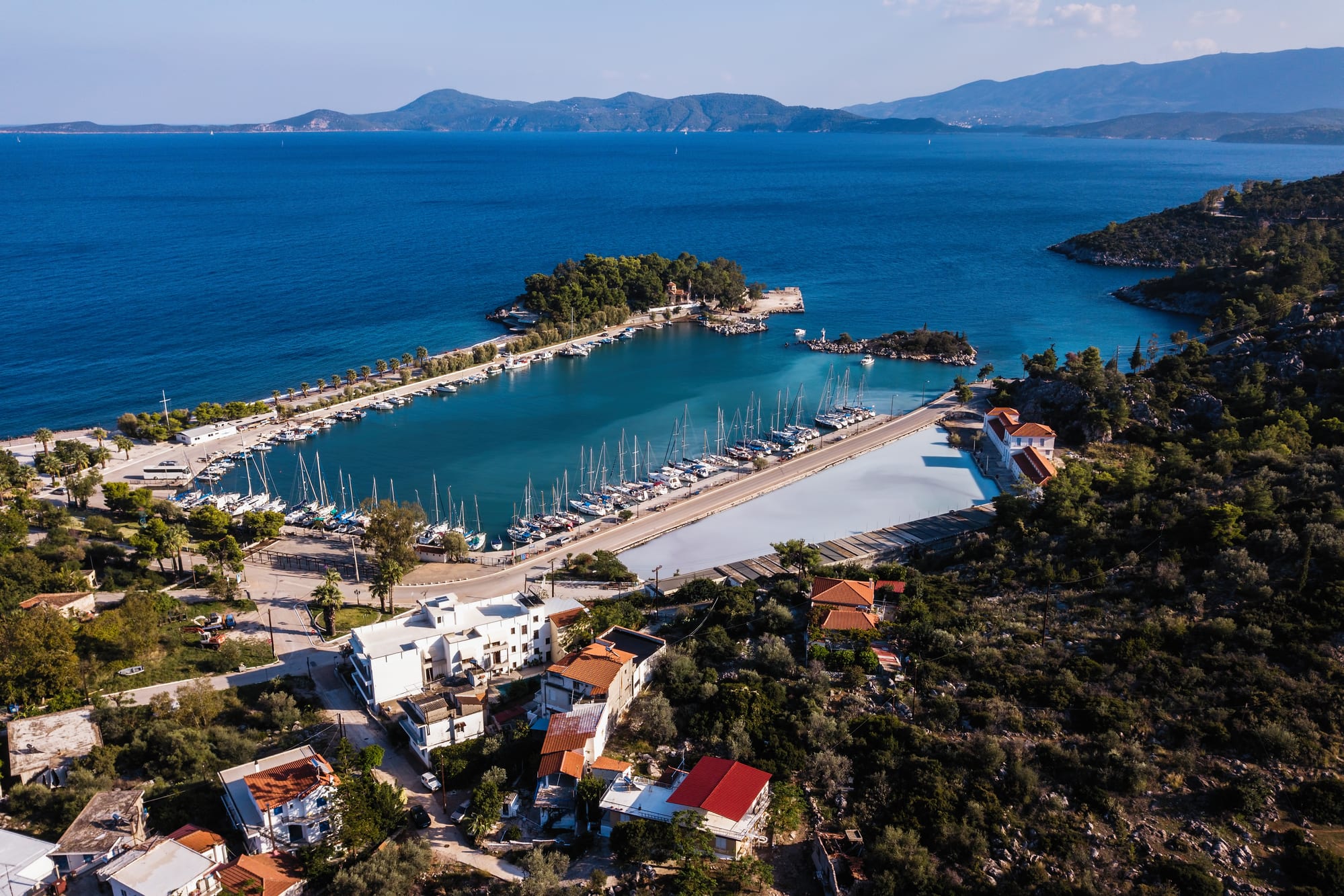
All you need to know about Methana
The mystical “island” of Methana was born as an island millions of years ago, but turbulent weather and volcanic eruptions throughout the Aegean Sea caused massive tsunamis that forced a narrow isthmus to rise up from the sea and naturally connected the island to the eastern coastline of the Peloponnese. Methana boasts majestic volcanic scenery, pretty villages, thermal springs, and astonishing landmarks.
Background
The island is a dormant volcano with its last eruption taking place in 1700 in a submarine volcano. Due to its volcanic origin, the island offers an array of interesting sights: preserved prehistoric settlements, ruins of sunken cities, lava domes, craters and renowned thermal baths.
Here are our top picks:
The Volcano of Methana: The Volcano of Methana belongs to the Aegean volcanic arc, a chain of volcanos in the South Aegean Sea. The most famous crater of the volcano lies above the village of Kameni Hora and measures 50 meters deep and 100 meters in diameter. In total, the volcano possess 30 craters and offers spectacular views of the surrounding landscapes.
The Baths of Pausanias: These are the most famous springs in the whole of Greece and possess the richest source of Silicic acid in the world. The waters reach up to 41°C and have therapeutic qualities.
The Building of the Thermal Baths of Methana: The neoclassical building was constructed in 1930 to accommodate the popularity of the volcanic region of Methana. The region is filled with over 25 therapeutic sulfur springs that are fueled by active magma chambers that lie beneath the earth’s surface. The milky waters and mists of condensation create an utterly magical atmosphere.
The Cave of Peristerion: This is one of the oldest caves in the country; estimated to be around 2.5 million years old. Located in Vathi, the cave was discovered in 1973 and was found to be around 250 meters in length. The cave has three chambers; two with bright turquoise lakes and one filled with rocks, stalactites and stalagmites.
Petrokaravo: Located on the pier of Agios Georgios lies a semi-sunken ship measuring 45 meters in length. The ship was used in World War II by the Germans to transport materials.
The Acropolis of Ancient Methana: Located on the Hill of Paleokastro lie the remains of the ancient settlement of Methana. Remnants of volcanic rocks from the 4th century BC, ruins of ancient homes and Byzantine churches are some highlights to explore.
Ancient settlement of Agios Konstantinos and Eleni: In 1990 the remains of a prehistoric settlement, possibly Mycenaean, were discovered under the foundations of a small church. The findings of figurines and jewelry led archaeologists to believe that it was once a place of worship.
Castle of Faviero: The Castle of Faviero was built in 1826 on the foundations on another church. It was built in honor of French Admiral Nikolaus Karolos Favieros who commanded the first army of Greece. The well preserved castle is an impressive sight. Churches and chapels: The Chapel of Agios Ioannis the Theologian, The Chapel of Agios Dimitrios, The Chapel of Krasopanagia, The Church of Agios Nikolaos and The Church of the Annunciation of the Virgin Mary.
Beaches
The island’s beaches boast an array of different qualities; some with lava hardened pebbles and milky sulphuric waters and others with white sandy bays and emerald waters. Each beach has a beautiful backdrop of mountainous terrain blanketed with lush pine trees.
Agios Nikolaos: A pebbled beach with azure waters close to the baths of Pausanias. It is well organised with lots of tourist facilities.
Almyra: This is a sandy beach with deep blue waters located in the village of Vathy. It is the perfect spot for serenity as it is very secluded.
Agios Georgios: This organised beach is a sandy bay with glassy waters surrounded by verdant vegetation.
Limnionas: This beach has a tropical vibe with it’s striking emerald waters, sandy bay and lush green scenery. There is a fantastic beachbar that offers delicious snacks and drinks throughout the day. This beach is considered to be the most beautiful beach on the island.
Nissaki: The beach of Nissaki has blonde sands and crystalline waters. It is well organized and offers tourist amenties and water-sports.
Paleokastro: This remarkable beach has red volcanic sands and deep azure waters. It is an organized beach with traditional tavernas that line the seafront offering stunning sea views.
Local cuisine
Local products include: olive oil, citrus fruits and wine. Although the island does not have any specialties originating from the island, like every Greek island Methana offers spectacular seafood.
Notable events and festivals
The island, as well it’s religious celebrations, also offers some interesting cultural festivals. To name a few:
The Carnival of Methana: Every February/March, located in Methana town.
The Traditional Boat Show: Every May in Methana town.
The Festival of Methana: The whole island gets involved in the yearly festival held in August. This festival consists of many cultural events, theatrical performances, music, street food, and dancing.


